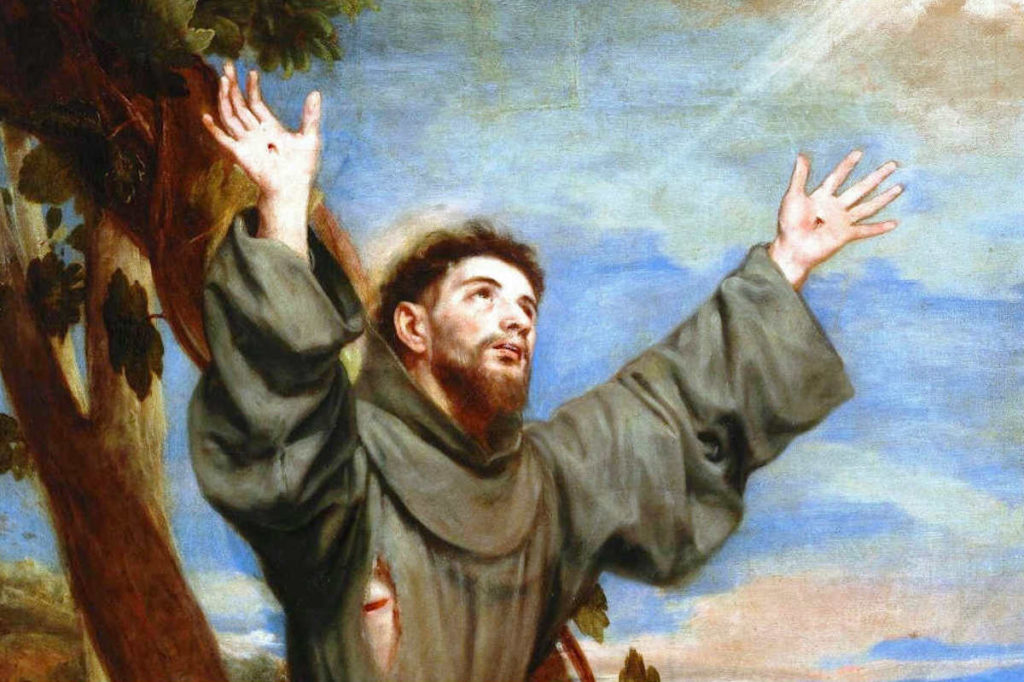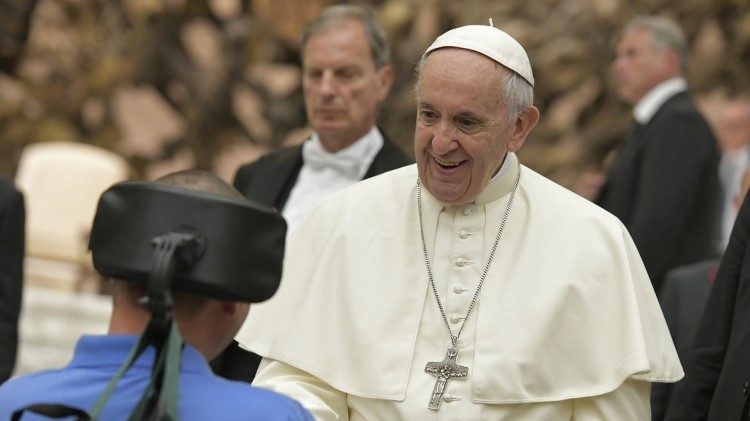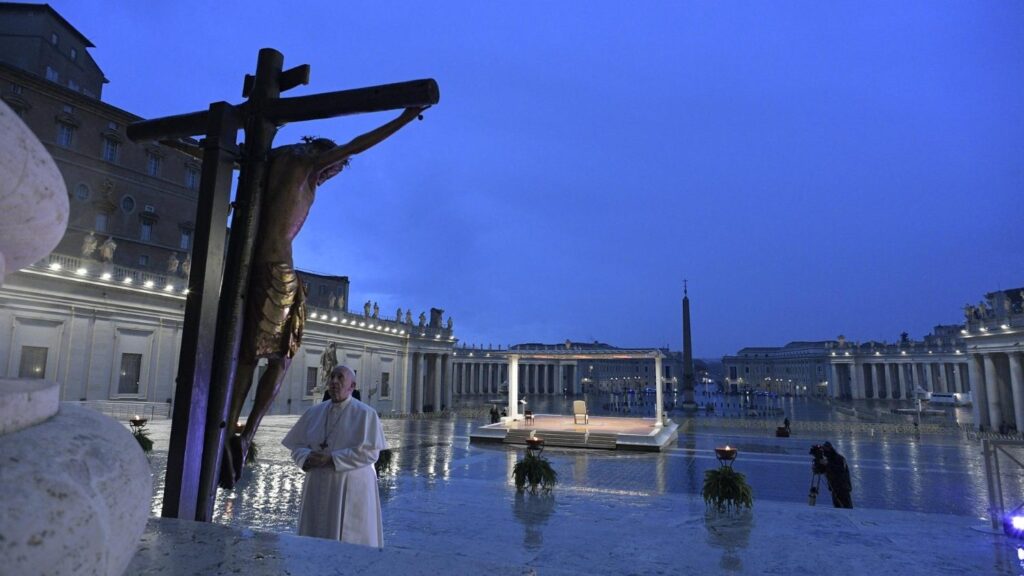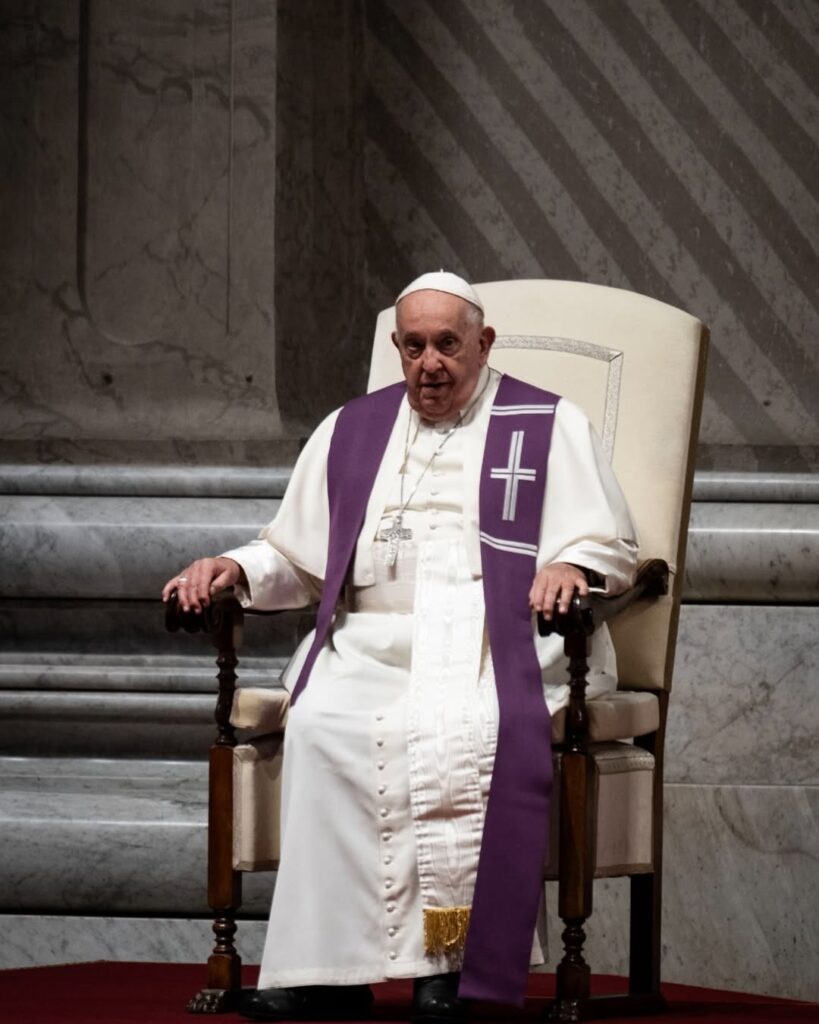October 4: Feast of Saint Francis of Assisi
An Invitation to Address the Challenges of the 21st Century

Christian Alvarez, Ph.D. in Literature, and member of the Franciscan Lay Order in the Chinquinquira Fraternity of Caracas, Venezuela, offers this article to Exaudi’s readers on the figure of Saint Francis of Assisi, on the day of his Liturgical Feast, observed every 4th of October.
* * *
Perhaps one of the Catholic Church’s Saints that awakens the greatest affection among Christians, but also among the faithful of other religions and even among non-believers, is Francis of Assisi, whose extraordinary life in following Jesus Christ began to leave its imprint in the first decades of the 13th century. Despite the habit of coarse and patched sackcloth that he wore, given his choice of poverty as his way of life — a condition that led his countrymen to call him Il Poverello d’Assisi [The Poor Little One of Assisi] –, there is something in his luminous figure that is always attractive, perhaps due to the fact of the unusual coherence of his being, of one who did not separate his words from his actions, which he converted into a constant loving offering. Thus it can be thought that such an attraction lay in showing a genuine humility, sometimes so unheard of and disconcerting, which perhaps invites us to an interior revision, to delve and discover what the basis consists of openness to true faith. Especially striking for many, however, was Francis’ supernatural joy, translated in his singing to God and to universal fraternity, and in lavishing his love equally, without distinction and with courtesy, on all human beings, on animals, and on the whole of Creation. With the singular gaze of the Saint of Assisi, it would seem that we glimpse moments of harmony that reminds us of the lost earthly paradise. And then we wonder: What is the key of that sensitive human fullness that Saint Francis reveals and for which we yearn?
It’s not unusual, therefore, to find in history and periodically, also in most recent years, “lives” of, and biographical approaches to, Saint Francis of Assisi from the most varied perspectives and inclinations. These are stimulated by his fascinating personality, which we can appreciate as “multifaceted” and also “polysemic” — in keeping with the expressions of the historian of Medieval spirituality, André Vauchez – with many and rich facets that offer, through the centuries, different interpretations according to personal and ideological tastes and interests. In his François d’Assise: Entre Histoire at Mémoire (2009), Vauchez says to us how initially Francis was celebrated as an “ascetic and stigmatic, Founder of a great Religious Order and model of Catholic orthodoxy” but also, from the end of the 19th century, he was considered with a somewhat different look, seen more as a naive dissident or perhaps an outsider — if the terms are valid — in the renewing proposal of his feat, that is, as a romantic hero, defender of an evangelical and mystical Christianity crushed by the ecclesiastical institution.” And now, in more recent times and with contemporary concerns, there is an effort to favour “the image of the defender of the poor, of the promoter of peace among men and religions, of the man lover of nature, defender and patron of ecology, or even the ecumenical Saint in which Protestants, Orthodox and also non-Christians can recognize themselves.” Each one aspires to configure “his” Francis, who shows himself smiling by virtue of a representative identification that is in tune with one’s searches and beliefs inspired in a perception of the good. But it must be said that in a world as the one we live in this last and simple word, which to many might seem obvious in a limited experience, is diluted for others in conveniences and relativizations that immobilize, for Francis is the very clear quality and essence of God that stimulates every aspect of his life. “You are the good, supreme good, total good,” prayed the Saint to the Lord, with a profound loving conviction.
To think of this expression of lover and his convinced vision might perhaps bring us closer to understanding something of that key of the Saint of Assisi, which attracts and illumines paths of the Christian journey. On reading the few texts authored by him and the first biographies closest to his historical existence, one can observe how Francis always seeks and acts as someone in love, so much so that he surprises with his unheard of and intense gestures of the madness of love that integrates at the same time exaltation and serenity, intimacy and expansive fraternal communication, simple expression and brilliance of diaphanous understanding, risky adventure and grateful celebration of dwelling even in the most extreme restriction. Francis is one in love with Jesus Christ! In the Legend of the Three Companions (1246) a curious episode is recalled which narrates the beginning of his process of conversion, shortly after a festive gathering: his friends of that time were witnesses of Francis’ self-absorption when in his interior silence he experienced the sweetest joy of the extraordinary find that revealed his evangelical path to him. To him who had been the leader of youthful celebrations of the city of Assisi, his companions asked — taken aback by the change in his behavior, so meditative — if he was thinking of contracting marriage and Francis, with the metaphors of his troubadour language, answered: “You say the truth because I’m thinking of taking such a bride so noble, rich and beautiful as you have never seen any other.” A troubadour of a new romance, as G.K. Chesterton pointed out acutely in his biography of the Saint published in 1923. Francis of Assisi was “really and truly in love” with the Person of God and, moreover, as a natural consequence of it, his being in love extended to all and so he recognized lovingly the divine image in every human being with the attention and careful fraternal-maternal treatment, especially of the poor and the most excluded from the society — his tender kiss of peace to the leper is paradigmatic in this connection –, which undoubtedly “involves a much more singular mystical vocation.” The experienced of the enamored in the light of the Gospel defined his gaze completely and outlined his actions and his mission, which invited all people to a conversion of heart. Hence his fascination and startled manner given Jesus’ kenosis (Philippians 2:7); the incomparable loving donation of God in His Son, who chose to live among us for our salvation. As historian Giovanni Miccoli rightly points out in Francesco d’Assisi: Realtà e Memoria di un’Esperienza Cristiana (1991) [Francis of Assisi: Reality and Memory of a Christian Experience] the whole of Francis’ existence corresponds coherently to the “logic of the Incarnation,” and it is the latter that explains his complete surrender at all times in his following of Jesus – “poor and crucified,” as Il Poverello insisted continually –, as well as with the respective enlightened meditation: the (re) discovery of God the Father and of His Son Jesus, our elder brother, present in the Word and in the Eucharist, who does not separate from His Mother, the Virgin Mary, the first follower of Christ and “vestment of God,” as he says beautifully in one of his praises.
This enthusiastic response of faith of Saint Francis really constituted a renewal of Christian living <of the faith> in his time and even of the theological perspective, which also opened unheard of and feasible and interesting alternatives in the path of the lay faithful, a proposal that succeeded in reaching our days. The Gospel is always Good News, which calls for our rereading and surrender to its meaning. However, during history, the inertia of securities, of ways of seeing and of practicing the religious dimension has often clouded attention to what is true, and the 13th century in which Francis lived was particularly critical of this aspect. Once again, Chesterton, in his book on Saint Thomas Aquinas (1933), makes an original comparison of the Angelic Doctor and the Poor Little One of Assisi, almost associating them as spiritual twins, despite their belonging to different generations and their paths presenting existential manifestations that are very different between them. In the spiritual crisis of the 13th century, when the pressure of rooted beliefs and seductive pagan ideas confused evangelical faith, Saint Francis’ memorable life and Saint Thomas’ work “reaffirmed the Incarnation, bringing God back to earth,” says Chesterton to us with subtle precision: “they led the Christian people to Christianity.”
Eight hundred years later, and on the celebration of the Saint’s day, October 4, isn’t Francis of Assisi’s simple and direct enamored vision a thought-provoking invitation to address the tough challenges that our problematic 21st century faces?
Translation by Virginia M. Forrester
Related

Francis. The Human and Religious Imprint of a Papacy
Isabel Orellana
24 April, 2025
5 min

Cardinal Felipe Arizmendi: With the Risen Christ, There Is Hope
Felipe Arizmendi
24 April, 2025
6 min

You Didn’t Give Up
Exaudi Staff
23 April, 2025
2 min

Sing, pray, give thanks
Mar Dorrio
23 April, 2025
2 min
 (EN)
(EN)
 (ES)
(ES)
 (IT)
(IT)

